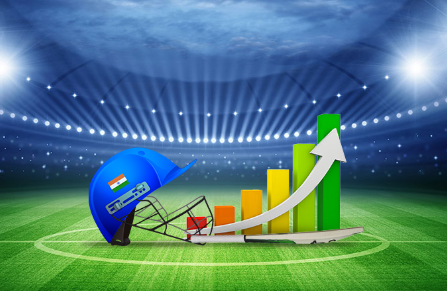In the world of sports, every minute detail can play a crucial role in deciding the outcome of a game or even the entire season. From selecting the perfect starting lineup to deciding on in-game tactics, a team’s performance can be improved by analyzing data. Predictive modeling is a technique that is increasingly being used in the sports industry to gain new insights into areas such as player performance and strategic analysis. This blog intends to explore how sports analysis using predictive modeling can enhance performance.
Predictive modeling in sports refers to the use of algorithms and statistical models to analyze large data-sets and predict outcomes and trends. It can be used to model future performance of individual players and/or the entire team. The data can range from simple stats like passes and goals in football to more complex metrics like pitch control in baseball.
Sports data is a goldmine of information, with comprehensive data now available to capture every move on the court, field, or arena. Various predictive modeling tools are being developed to identify patterns, recognize the critical parameters that influence the outcomes, and predict future results. Applications like IBM’s Watson, who have worked with the US Open to identify patterns and predict game strategies, show the immense potential of predictive modeling in sports.
eat-and-run verification (먹튀검증) Player-specific performance modeling has helped coaches and managers learn more about their players’ strengths and weaknesses. By analyzing individual player data and providing insights, both players and teams can make significant improvements. For instance, in cricket, the analysis of the performance of individual players in specific situations like batting vs. spin, powerplay overs, etc. can be used to prepare players better by providing tailored training sessions.
Predictive modeling can also help teams analyze their opponents and develop strategies based on patterns of play. By analyzing opposition data and strategizing accordingly, teams can gain an edge over their rivals. The Barca Innovation Hub’s collaboration with FC Barcelona is one of the most significant collaborations in the sports industry to use data analysis and predictive modeling to study opponents’ tactics.
Another obvious advantage of sports analysis using predictive modeling is injury prevention. Health data of players, specific conditions that are accentuated during games, playtime, recovery time, and training loads can all be used to prevent injuries and predict potential injuries in other players.
Conclusion:
In conclusion, predictive models provide a way of analyzing data, quickly distilling key insights, and predicting outcomes. It enables our sports professionals to make better decisions in real-time, giving teams an edge in terms of performance, improving their performance, and leading to a consistently better standard of play. Ultimately, sports professionals who embrace this technology will better position their team for sustainable success. Predictive modeling can help coaches make more informed decisions on and off the field, prevent injury, and discover important information about a player’s performance that might be difficult to glean through other means. Embracing predictive modeling to make better decisions in the future is the way forward for coaches and sports analysis.



